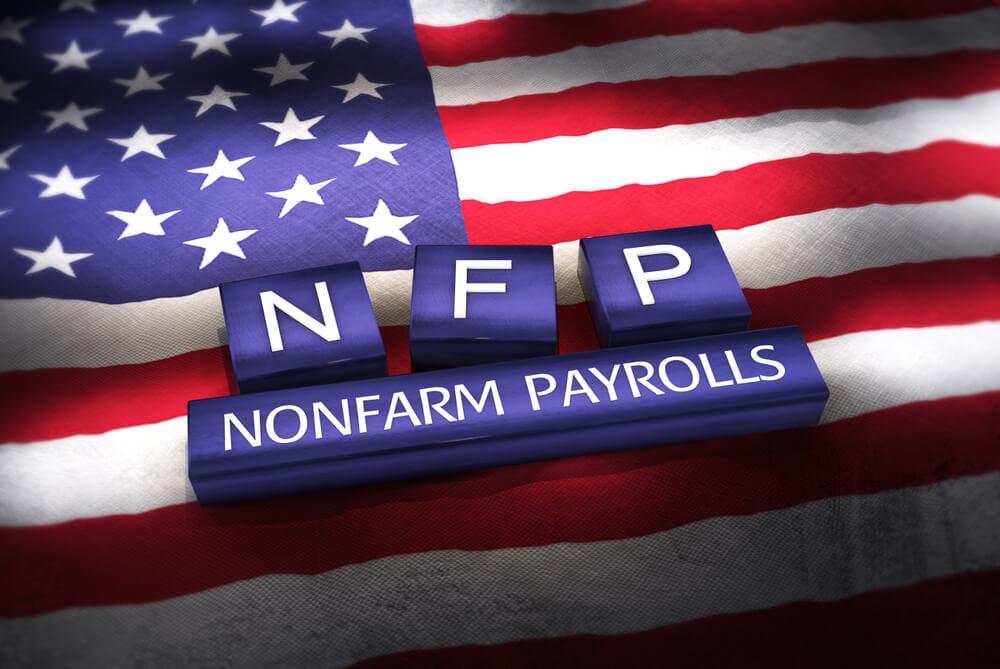Understanding Nonfarm Payrolls and Their Significance in Forex Trading
Nonfarm payroll, or NFP, is a key economic indicator in the USA, the world’s largest economy. Below we take a closer look into the meaning and significance of NFP and their impact on forex trading.
Written by Aaron Akwu, Head of Education Hantec Markets

What is Nonfarm Payroll?
Nonfarm payroll is a term that refers to the number of paid workers in the U.S. economy, excluding farm workers, private household employees, and non-profit organization workers. It is an important indicator of the health and performance of the labour market and the overall economy. The U.S. Bureau of Labor Statistics (BLS) releases a monthly report on nonfarm payroll, usually on the first Friday of each month, based on a survey of about 142,000 businesses and government agencies.
The nonfarm payroll report provides various statistics, such as the total number of employed and unemployed workers, the unemployment rate, the labour force participation rate, the average workweek, and the average hourly earnings. It also breaks down the employment data by industry sectors, such as manufacturing, mining, construction, education, health care, leisure and hospitality, and professional and business services. The report helps policymakers, investors, analysts, and researchers to assess the current state and trends of the labour market and the economy.
The nonfarm payroll report is often subject to revisions based on more complete data or methodological changes. It may also differ from other sources of employment data, such as the household survey data that is used to calculate the unemployment rate. The household survey data covers a smaller sample size and includes self-employed workers, farm workers, and unpaid family workers. Therefore, it is important to compare and contrast different sources of employment data to get a more accurate and comprehensive picture of the labour market.
Employment Situation Summary
The employment situation summary is a monthly report that provides an overview of the current state and trends of the U.S. labour market. It is based on two surveys: the household survey, which measures the employment status of the civilian population, and the establishment survey, which measures the nonfarm payroll employment, hours, and earnings of workers in various industries.
The most recent employment situation summary was released on September 1, 2023, and covers the data for August 20231. According to the report, total nonfarm employment rose by 187,000 in August, and the unemployment rate increased slightly to 3.8 per cent. The report also shows that job gains occurred in health care, leisure and hospitality, social assistance, and construction, while employment in transportation and warehousing declined. The average hourly earnings of all employees on private nonfarm payrolls increased by 11 cents to $30.73 in August, following a 13-cent increase in July. The average monthly gains for nonfarm payroll employment over the past 3 months were 282,000 per month1.
The employment situation summary is important because it provides a comprehensive picture of the labour market conditions and the economic performance of the U.S. It is widely followed by policymakers, investors, analysts, researchers, and the general public as a key indicator of the health and direction of the economy. The report also influences the decisions of the Federal Reserve on monetary policy and interest rates.
Forex Trading and Nonfarm Payrolls
The relationship between forex trading and nonfarm payrolls is that the jobs report can have a significant impact on the exchange rates of the U.S. dollar and other currencies. The jobs report reflects the state and direction of the U.S. economy, which is the largest and most influential economy in the world. Therefore, the jobs report can affect the demand and supply of the U.S. dollar and its value relative to other currencies.
Generally speaking, a strong jobs report, which shows higher than expected nonfarm payroll employment, lower than expected unemployment rate, higher than expected labour force participation rate, longer than expected average workweek, and higher than expected average hourly earnings, can signal a robust and growing U.S. economy. This can increase the confidence and optimism of investors, consumers, and businesses and boost the demand for the U.S. dollar. As a result, the U.S. dollar can appreciate against other currencies, meaning that it can buy more units of foreign currencies.
Conversely, a weak jobs report, which shows lower than expected nonfarm payroll employment, higher than expected unemployment rate, lower than expected labour force participation rate, shorter than expected average workweek, and lower than expected average hourly earnings, can signal a sluggish and contracting U.S. economy. This can reduce the confidence and optimism of investors, consumers, and businesses and lower the demand for the U.S. dollar. As a result, the U.S. dollar can depreciate against other currencies, meaning that it can buy fewer units of foreign currencies.
However, the relationship between forex trading and nonfarm payrolls is not always straightforward or predictable. There are many other factors that can affect the exchange rates of currencies, such as interest rates, inflation rates, trade balances, political events, market sentiments, and expectations. Moreover, sometimes the market may react differently to the jobs report than expected, depending on how the jobs report compares to the previous reports and the consensus forecasts. For example, if the market has already priced in a strong jobs report based on other economic indicators or signals, then a strong jobs report may not have much effect on the exchange rates of the U.S. dollar. On the other hand, if the market is surprised by a weak job report that contradicts other economic indicators or signals, then a weak job report may have a large effect on the exchange rates of the U.S. dollar.
Therefore, forex traders need to be aware of the potential impact of nonfarm payrolls on forex trading and be prepared for any possible scenarios and outcomes. Forex traders also need to monitor other economic indicators and events that can influence the exchange rates of currencies and adjust their trading strategies accordingly.
When Are Nonfarm Payrolls Released?
Every month, the data reflects the previous month’s data and is usually released at 8:30 AM ET on the first Friday.
Is Nonfarm Payroll a Leading or Lagging Indicator?
The nonfarm payroll report shows the events that have an impact on the overall economy but is not a leading indicator.





